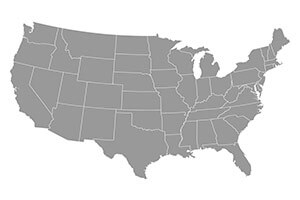
United States
Winter may have been long and cold (and very white in some places), and spring may have been late, cool and wet, but we’re hearing from most of the country that all that moisture in the ground points to a nice crop of 2019 honey.
Northeast
It was a cool, wet spring in New York, and the state saw higher than normal winter losses, but things have dried out some and prospects look good for the year’s honey production. Local, pure honey is in high demand.
New Hampshire also reports a great deal of moisture in the ground from heavy spring rains.
In Pennsylvania, increased acreage of corn and beans are taking out bee pasture. Large honey packers are suffering from a perception that their store honey doesn’t taste as good, due to too much blending.
Mideast
Kentucky saw lower than normal winter losses, and spring was a couple of weeks early, but we’ve had lots of rain since; this, combined with moisture from fall and winter, should bode well for honey production once things dry out a bit.
Virginia’s weather is about average, and colonies are looking good going into summer.
Tennessee reports winter/spring losses slightly above normal, but remaining colonies came out of spring strong, so on balance a fair production year is expected. Honey supplies are short from last year, and retail demand is high for good-quality honey.
Southeast
Florida’s orange blossom crop was up 80 percent from last year. The gallberry crop was fair, but “too many lovebugs” reduced the palmetto flow. Cool spring weather reduced availability of new queens and bees.
Alabama also reports slightly higher winter/spring losses, and resultant lower package bee availability. Spring was otherwise early, leading to good crops of dandelions, clover and cherry laurel. Facebook marketing continues to be productive.
Southwest
Demand for local honey remains very strong in Louisiana. Spring wildflowers produced a good amount of honey, and the tallow flow was fair.
The New Mexico honey outlook looks good, with Russian knapweed, alfalfa and coyote willow leading the way.
East Central
Michigan’s winter losses were low, but spring was several weeks late. Honey supplies are low, so hopefully the good ground moisture will pay off with a good summer crop.
Wisconsin also had a late spring, and package and nuc deliveries were behind schedule. Some orders from California were cancelled outright due to cold and wet conditions there, but bees were available from the Southeast. It’s been cold in the north and dry in the south. Winter survival was better near the Great Lakes than in the central and western portions of the state. The Wisconsin Honey Producers Association reports a drop in younger beekeepers entering the profession, and is promoting mentoring programs to try and bring those numbers up.
Spring in Illinois was also late, with entirely “too much rain” throughout and below-normal temperatures in the north. Feeding has been necessary since February in the northeast, with the flow not getting going until late May. This has been especially bad for the Russian and Carniolan bees, which are more dependent on natural forage to build their numbers. A correspondent who rents hives reports a doubling in fees due to increased demand.
Indiana also reports a cold, wet, late spring. But the early flow has been good, and clover honey production looks promising.
West Central
We’ve certainly heard about the flooding in Nebraska. A long white winter left the ground saturated, access to hives was restricted first by snow, then by flooding, and the spring rains just kept coming. The good news is, all that moisture should lead to nice crops of sweet and Dutch clover. Demand for bees also remains strong, as new beekeepers keep signing up. Conservation agents continue to promote pollinator plots, but this is offset by prime alfalfa forage being converted to commodity corn and soybeans.
All that water flows downhill. The Kansas spring has also been late and wet. There’s been a glut in supplies of package bees and nucs here, and some suppliers have unable to move them all.
Iowa’s spring was late but things had returned to close to normal by late May. That’s the good news. One reporter says starvation was a major issue in the state due to a ….


